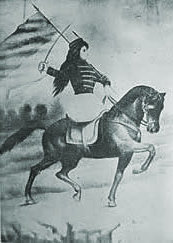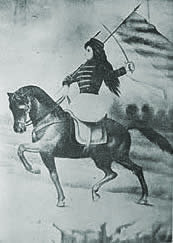
|
Women and Independence in Latin America An exploration of women's involvement in the Latin American Wars of Independence |

|

|
Women and Independence in Latin America An exploration of women's involvement in the Latin American Wars of Independence |

|
Gender:Female
Ethnic origen: White
Events:
| 1771 | - | Sucre | - | Not applicable | - | She was born around 1771. |
| 1809 | - | Sucre | - | Patriot | - | She joined the independence cause. |
| 1810 | - | Sucre | - | Unknown | - | She was a member a group of distinguidas señoras who greeted Castelli in Sucre on 27 December 1810. |
| 1816 | - | Oruro | - | Unknown | - | She was exiled and imprisoned here around 1816. |
| 1818 | - | Sucre | - | Unknown | - | She died in Sucre after going insane following imprisonment. |
| 1818 | - | Sucre | - | Unknown | - | She lived mostly in Sucre. |
Connections:
Aldunte señorasBiography:
Born in Cinti, Sucre, around 1771, she married José Joaquín de Lemoine at a young age. He was a patriot who was in the front line contributing to the defeat of the Presidencia de la Real Audiencia de Charcas, Ramón García León de Pizarro, on 24 September 1809. She, too, was an enthusiastic patriot firmly adhering to the revolution of 25 May 1809. She had her goods confiscated, which amounted to 60,000 pesos, and she was exiled to Lagunillas. She and her nine children had to walk there; she did so with admirable firmness and Christian resignation. She is reputed to have said: "La aurora de nuestra felicidad acaba de nacer: una nube pasajera la obscuece; para disiparla hemos de menester constancia; y, ¿podría haber patriotismo si se renuncia a esta virtud?" When the patriots won she returned from her exile to Sucre. She is said to have continued to fight for the cause, dressed in a military suit. When the royalists regained Sucre she was again captured and exiled to Oruro. She was entombed in a filthy prison cell with several political prisoners who were later shot in front of her. She became seriously ill and lost her reason. She was insane when her death sentence was commuted. She was taken from Oruro to Sucre where she died in 1818. Her children were educated by the people of Sucre. (Urquidi, 146-150)
She was a member of Aldunte y Rada's group of distinguidas señoras who greeted Castelli in Sucre in December 1810. They offered him their jewellery for the cause. (Urquidi, 151, 215)
References:
Urquidi, José Macedonio (1918) Bolivianas ilustres, heroinas, escritoras, artistas, Tomo I